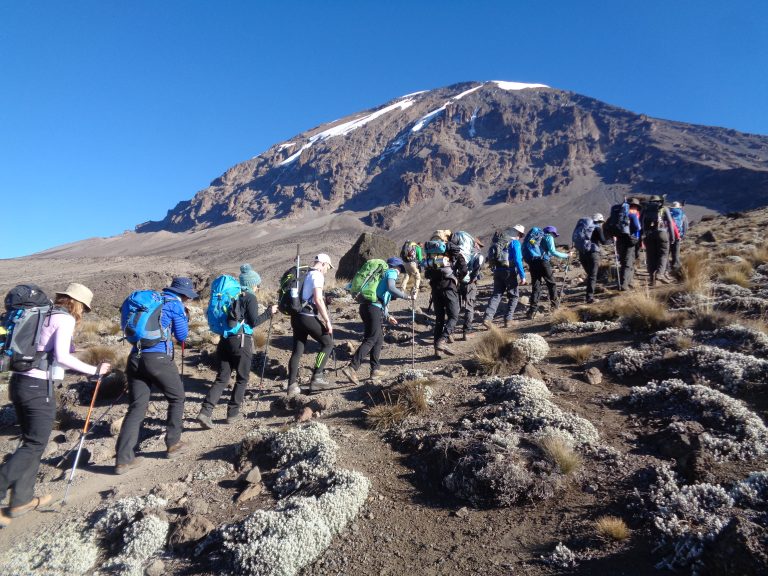Mount Kilimanjaro Landscapes
Introduction to Kilimanjaro Landscape
Mount Kilimanjaro is one of Africa’s most iconic natural landmarks and the tallest peak on the continent. Located in Tanzania, Kilimanjaro’s landscape is incredibly diverse, taking climbers from lush rainforest to barren, snow-capped summit. Each zone of the mountain offers a unique glimpse into different ecosystems and geological features, making it a fascinating destination for nature lovers, trekkers, and geologists alike. In this article, we’ll delve into the remarkable landscape of Kilimanjaro, its landforms, and what makes it such a unique mountain.
The Unique Landforms of Mount Kilimanjaro
Kilimanjaro is composed of three volcanic cones: Kibo, Mawenzi, and Shira. Kibo, the tallest cone, is home to Uhuru Peak, Kilimanjaro’s highest point at 5,895 meters (19,341 feet). Mawenzi and Shira are extinct, while Kibo is dormant and could potentially erupt again. These volcanic formations contribute to Kilimanjaro’s rugged terrain and create distinct landforms seen along the ascent.
- Kibo Cone and Crater: Kibo’s cone features a large crater with a rim that climbers traverse to reach Uhuru Peak. The crater itself is filled with volcanic rock and ash, a reminder of the mountain’s volcanic origins. As climbers reach this altitude, they encounter glaciers and ice fields, a striking sight against the dark volcanic rock.
- Mawenzi and Shira Peaks: Mawenzi’s jagged ridges and pinnacles add to Kilimanjaro’s dramatic profile, while Shira’s broad plateau has eroded over time, creating a vast expanse with volcanic rocks and lava formations. The Shira Plateau provides a flat, open landscape that’s ideal for acclimatization hikes.
Diverse Terrain Across Ecological Zones
The journey up Kilimanjaro takes climbers through five distinct ecological zones, each with unique terrain, vegetation, and climate. The Kilimanjaro landscape changes dramatically from the base to the summit:
- Cultivation Zone (800–1,800 meters): The lower slopes of Kilimanjaro are fertile and covered with farmland, where local communities grow crops like coffee, bananas, and maize. This zone offers lush landscapes and scenic views of the surrounding countryside.
- Rainforest Zone (1,800–2,800 meters): Just above the cultivation zone, the rainforest is dense, humid, and full of life. The terrain here is lush, with towering trees, moss-covered rocks, and diverse wildlife, including monkeys and colorful birds. This zone often experiences mist, adding to the mystical atmosphere of the forest.
- Heath and Moorland Zone (2,800–4,000 meters): As climbers ascend, the vegetation becomes sparser, giving way to unique plants like giant groundsels and lobelias. The landscape becomes more rugged, with heather-covered hills, rocky outcrops, and open spaces where the temperatures drop significantly at night.
- Alpine Desert Zone (4,000–5,000 meters): This zone is characterized by harsh conditions, with minimal vegetation, loose gravel, and volcanic rock. The landscape here is barren and windswept, offering a stark contrast to the lush lower slopes. The dry air, cold temperatures, and intense sunlight make this one of the most challenging parts of the ascent.
- Arctic Zone (Above 5,000 meters): At the highest altitudes, Kilimanjaro’s terrain is icy and desolate. The summit zone is dominated by glaciers and ice fields, including the Furtwängler Glacier. Despite their beauty, these ice formations are rapidly retreating due to climate change, making them a unique yet endangered feature of the Kilimanjaro landscape.
Geological Composition of Mount Kilimanjaro
Kilimanjaro’s rocks are primarily volcanic in origin, composed of types like basalt and phonolite. Basalt, a dark, dense volcanic rock, is common in the lower zones, while the upper zones contain phonolite, which is lighter in color and texture. The varied rock formations create a geological tapestry that tells the story of the mountain’s volcanic history. Shira and Mawenzi cones have weathered significantly over time, creating unique rock features and eroded landscapes along the trails.
What Makes Kilimanjaro’s Landscape So Unique?
Kilimanjaro’s combination of diverse ecosystems, volcanic landforms, and dramatic elevation changes makes it unlike any other mountain. The fact that climbers can experience tropical forests, alpine deserts, and icy glaciers in a single trek is remarkable. Additionally, Kilimanjaro’s freestanding nature—it’s not part of a mountain range—sets it apart, as it rises abruptly from the surrounding plains, offering unmatched panoramic views of East Africa.
Conclusion
The Kilimanjaro landscape is an awe-inspiring blend of nature and geology, showcasing the planet’s diversity in one majestic mountain. For those looking to explore one of the world’s most unique terrains, a trek up Kilimanjaro offers not only physical and mental challenges but also the chance to witness some of the Earth’s most incredible landscapes. Whether you’re captivated by the glaciers at the summit or the lush rainforests at the base, Kilimanjaro’s landscape promises an unforgettable adventure.


One Comment